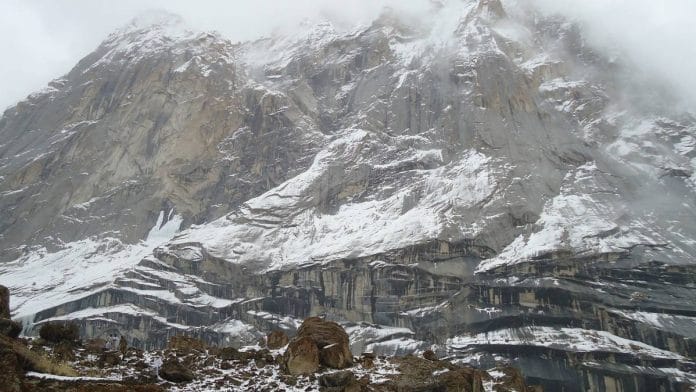New Delhi: A team of scientists at the Indian Institute of Technology (IIT) Bombay is creating a model that can predict when a glacial lake will likely reach its maximum length – an advance that could possibly help forecast and prevent natural disasters in the Himalayan region.
Although the study is at its nascent stage, it can help avert disasters like the 2013 Chorabari incident, in the Himalayan region.
A study, published in the journal Scientific Reports this month, said the researchers simulated the evolution of a large glacier-fed lake called the Gepan Gath lake located in Himachal Pradesh.
According to the team, which included IIT Bombay professor RAAJ Ramasankaran, due to the extremely large volume and steep lake sidewalls, the Gepan Gath lake has been classified as “critical” or prone to hazards such as lake outburst floods in the future.
Using meteorological data, the researchers created a model to estimate how the lake will grow. They arrived at the conclusion that the lake will reach its maximum length by 2030.
Does this mean there will be an immediate lake burst around the time? “Not exactly,” said Prateek Gantayat, an independent researcher in India. This model can currently only estimate how the lake will grow in one axis – that is, it can only estimate the maximum length attained.
“We need more work to determine if the lake will expand in other directions,” said Gantayat who was part of the Gepan Gath research while he was working at IIT Bombay.
He said he was working on improving the current model with a similar project being conducted on a glacial lake in Nepal.
Also Read: ‘Ban construction to protect Kedarnath from avalanches’ — what expert panel told Uttarakhand govt
Limitations in developing accurate models
Gantayat said there are several limitations to developing accurate models to predict the evolution of glacial lakes. “There is no publicly available data on glacial melt rates in the Himalayan region. Although some researchers have collected this data, it is not published anywhere,” he said.
Apart from this, accurate modelling also requires data on the depth of the glacial lake. “Collecting this data is very challenging. It requires researchers to travel to the location to carry out SONAR surveys. Only a handful of lakes have such data available,” Gantayat said. SONAR (Sonic Navigation and Ranging) is a technique that uses sound waves to measure the depth of a water body.
He noted that these surveys could possibly help predict disasters.
“Glacial lakes in the Himalayas are beginning to reach an inflection point. Some researchers suggest that glacial lakes in the Eastern Himalayas are already at capacity. Glacial lakes in the Central Himalayas are also beginning to reach capacity,” said Gantayat.
Such lakes are expected to be formed in the Karakoram Range and the Western Himalayas soon, a threat to the lives of those based in the higher reaches of the Himalayas, said Gantayat.
“Such kind of studies will help in monitoring evolution of glacial lakes and that might help prevent any potential natural disaster, such as a glacier lake outburst flood,” he said.
Threat caused by glacial lakes
Glacial lakes are bodies of water that form as a result of glacial retreat. As a glacier melts and recedes, it can leave behind depressions in the land that fill with water, forming a lake. The movement of glaciers can also create blockages, which can cause a buildup of water and the formation of a glacial lake. As the glacier continues to shrink, the lake grows.
Glacial lakes can pose a threat to nearby communities as they can cause flooding or potential dam failure if the natural dam that holds back the water gives way. These events can result in loss of lives and cause significant damage to infrastructure. Hence, monitoring and management of glacial lakes is important in areas where they are common.
Edited by Geethalakshmi Ramanathan
Also Read: Sample From Speeding Asteroid Shows Its Made Of Stuff Similar To That Which Formed The Sun






